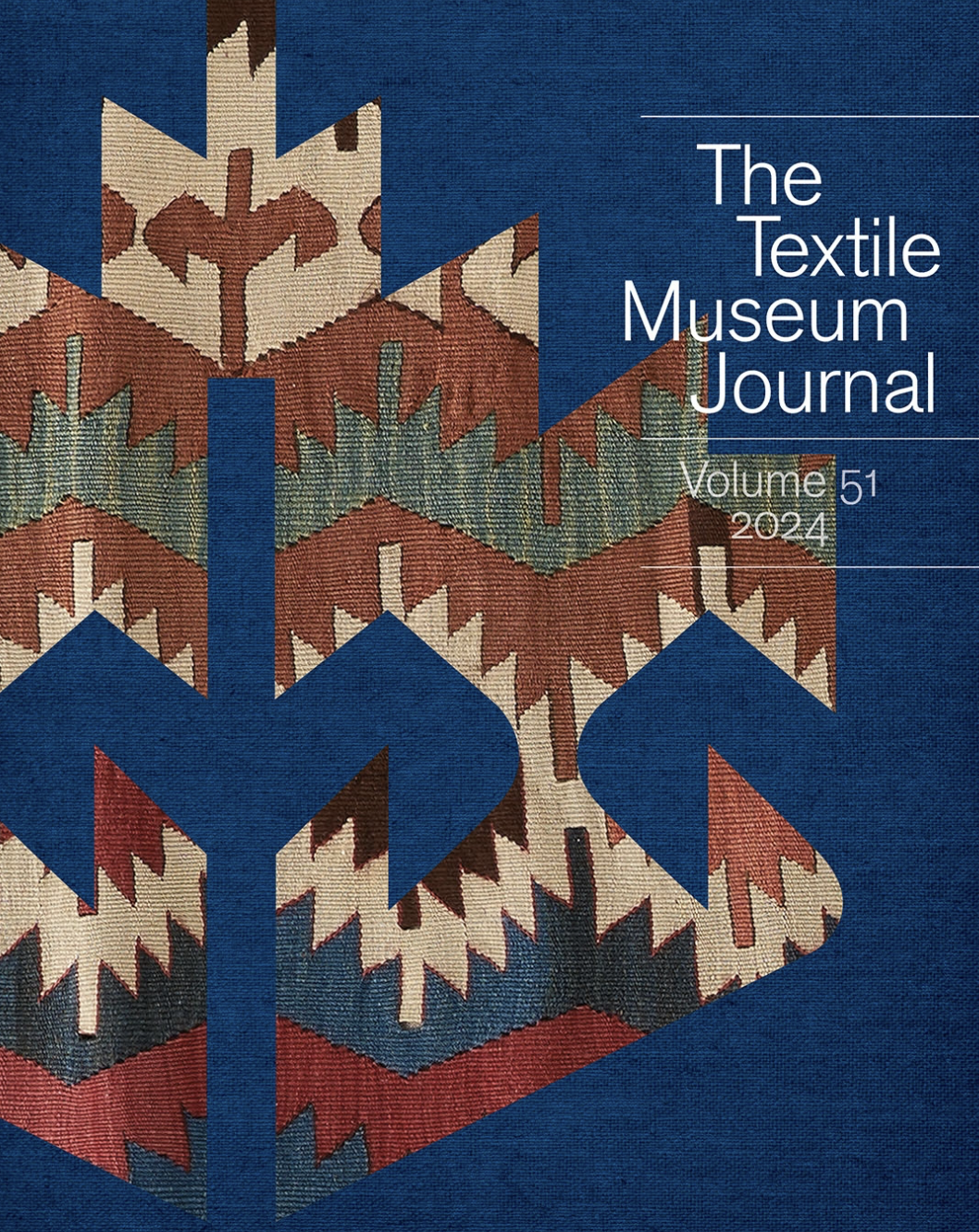
Article: Farniyaz Zaker, "Between Ornament and Structure: Carpets in Modern Art and Architecture", Textile Museum Journal, Volume 51, November 2024.
Purchase the Printed Edition
Following Gottfried Semper’s notion of the origins of architecture in textiles, this article investigates how modern architecture and art have used textiles, in particular carpets, to manipulate our perception of space by evoking a sense of enclosure and tactility. It examines the carpet-inspired gardens created by Gabriel Guevrekian in 1920s France; the architecture of Belsize Park house, which Georgie Wolton built in 1976 to house her kilim collection; the textile art of Anni Albers; and the author’s own art practice as well as a partially carpet-based art installation at Berlin’s Neue Nationalgalerie created by Rudolf Stingel in 2010.
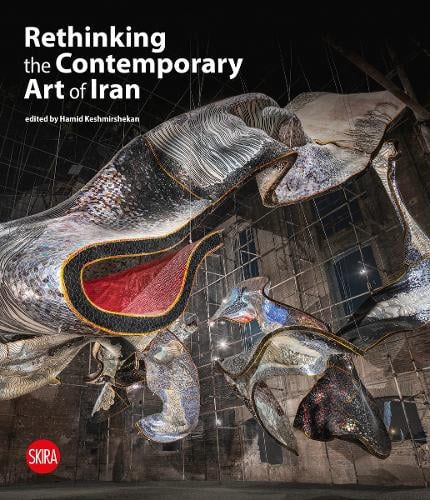
Book: Hamid Keshmirshekan (editor), Rethinking the Contemporary Art of Iran, Skira Editore, Milano, Italy, 2023.
Purchase Book
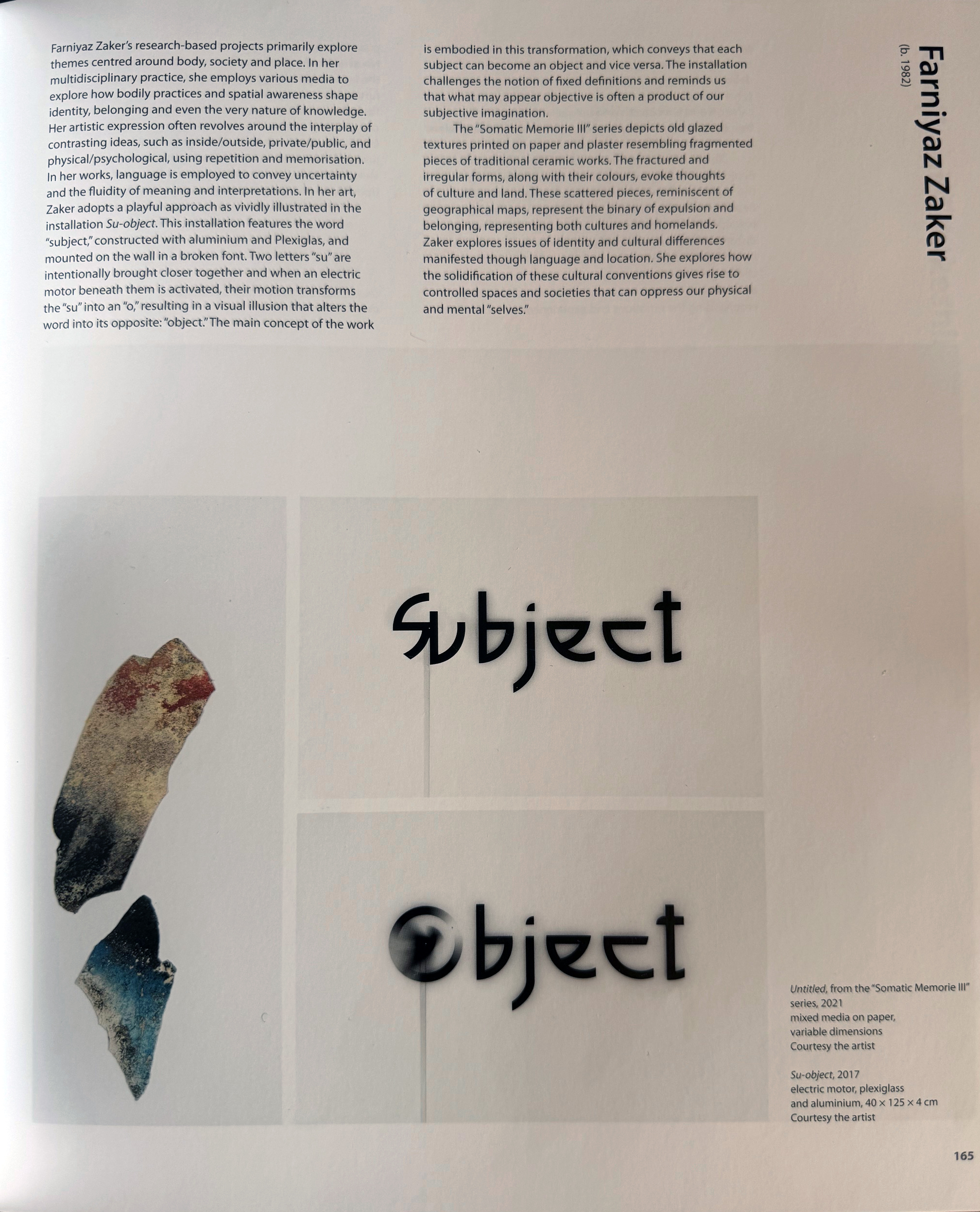

Rethinking the Contemporary Art of Iran seeks to articulate an altalternativerative of Iranian art in recent times, diverging from theprevalent portrayals often found in publications derived from exhbitions or collections in Western Europe and North America. It lso steers away from th pthevailing trend-setting schemes witin the art world, particularly those attempting to “define” what qualifies as “contemporary Iranian art”..”

Conference Paper: "the Soviet delegation at the 1934 Ferdowsi millennial celebration in Iran: synergy and friction between Iranian and Soviet cultural diplomacy
Matthias Battis - UCL School of Slavonic and East European Studies (SSEES) and Farniyaz Zaker - Institute of Advanced Studies (UCL)
The paper examines the role of the Soviet participation during the millennial celebration of the Persian poet Ferdowsi in Iran in the autumn of 1934. While the Iranian government’s nationalising rationale behind the month-long festivities has been explored in some detail, much less is known about the considerable cultural diplomacy effort of the Soviet Union, which sent the largest of all international delegations to Iran.
The paper provides a look behind the scenes of this effort, on the part played by Soviet academics in it as ,well as on its reception by left-leaning Iranian intellectuals. We will shed light on the expectations, motivations, hopes and fears of Soviet and Iranian scholars engaged in the organisation of the Ferdowsi millennial celebration, such as Iurii Marr, Aleksandr Freiman, Fatemeh Sayyah and Saeed Nafisi, using mainly their private and official correspondence as well as their contributions to contemporary Russian and Iranian newspapers and journals (including Ettela'at, Izvestiia, Pravda, Mehr). The picture that will emerge is one of the secularising and nationalising elites cooperating withwith the creation ofular heroes and myths of the nation in the precarious service of two different authoritarian states.
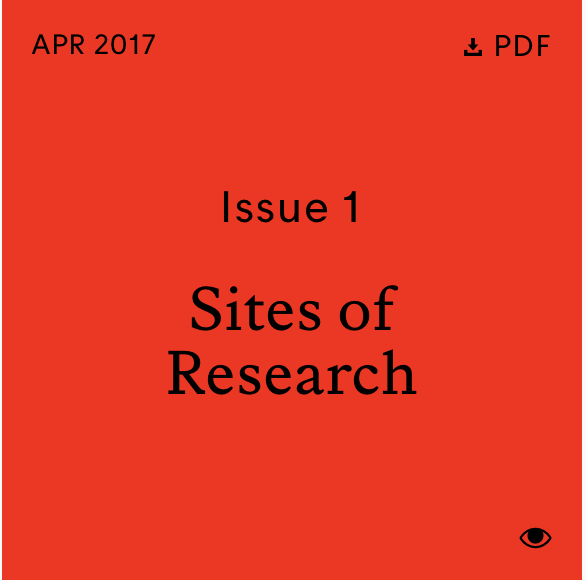 Article: Farniyaz Zaker, “Jenseits: Place, Dwelling and Art Practice”, Oxford Artistic and Practice-Based Research Platform (OAR), Issue 1, 2017, pp. 111–117.
Article: Farniyaz Zaker, “Jenseits: Place, Dwelling and Art Practice”, Oxford Artistic and Practice-Based Research Platform (OAR), Issue 1, 2017, pp. 111–117.
Link to Text
How and why would we think of dwelling in terms of artworks?
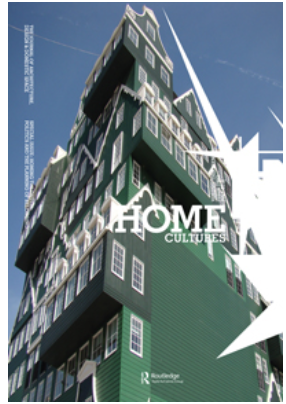
Article//Review: Farniyaz Zaker, “A Room Without Boundaries: Ai Weiwei at The Royal Academy of Arts”, Home Cultures Journal, Issue 13:2, 2016, pp. 221–223.
Link to Text
Ai Weiwei is one of those contemporary artists who is acutely aware of the power of architecture and its influence on our lives. Although his artistic practice is deeply rooted in his campaign for freedom of speech in China, it is also embedded in architectural theory and discourse. This was especially striking in his recent exhibition in the Royal Academy of Arts, whose historical rooms ...
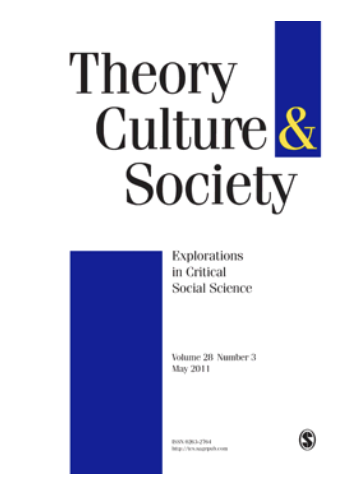
Article//Coversation: Mariam Motamedi Fraser and Farniyaz Zaker, “Words and Walls, Texts and Textiles”, Theory Culture & Society Journal, 2015, Vol. 32(3), pp. 115–134.
Link to Text
The authors explore how the multi-media artist Farniyaz Zaker uses words to establish connections between different kinds of materials in her work, and how her work makes words material. Zaker’s conception of dress as ‘microcosmic dwelling places’ enables the authors to think about veiling practices, Islams and gender not only in relation to the familiar domains of state, piety, subjectivity, consumption, capitalism, public and private (for instance), but also with regard to some less self-evidently relevant contexts. Light, architecture and cinema, as well as walls, windows, curtains, coffins, tents and screens, are among them. It is by way of these multiple refractions that the authors are able to return to those debates that conceive of Islamic veiling in terms of embodied, material practices and to support and develop further reasons for an understanding of that most exceptionally charged piece of material, the veil, as more than a sign of …
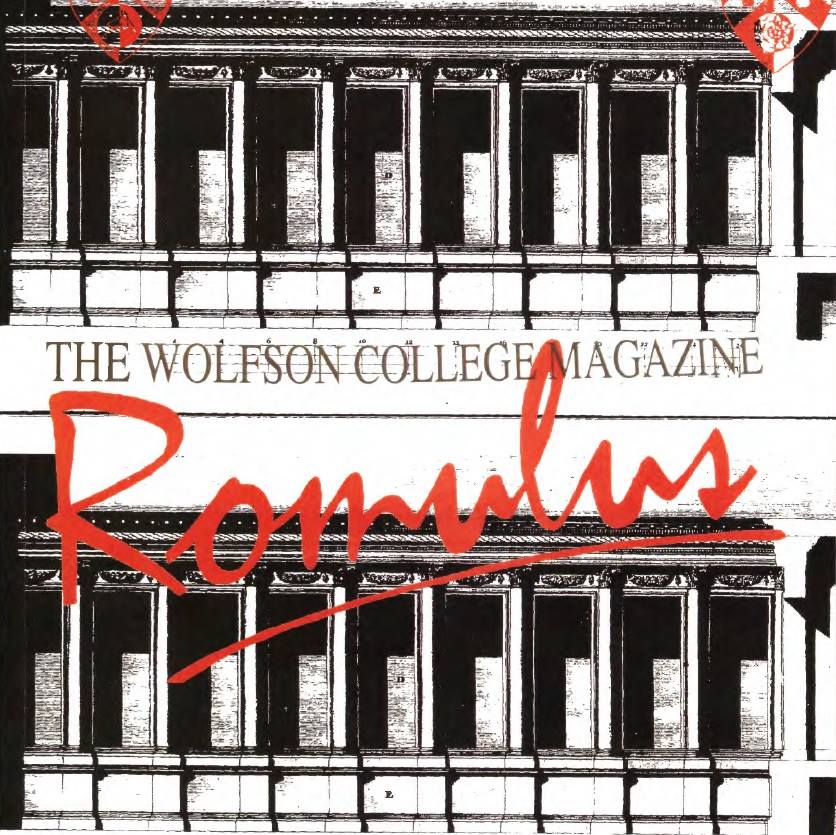
Article//Review: Farniyaz Zaker, “Home, Displaceme and the Body: Mona Hatoum at Tate Modern | London”, RomulusDiDisplacement 2016, pp. 12–13.
Link to Text
Book: Mariam Motamedi Fraser, Word : Beyond Language, beyond Image. (Lanham, Maryland: Rowman & Littlefield, 2015). Purchase Book The book explores the epistemological, experiential and political implications of words when lifted out of language and discursive meaning. Referring to reliable sources and research, Motamedi studies the function of word with different approaches and in different contexts. Centering this subject, she explores the language’s conceptual limitations, contradictions and its extensions with image.
Studying different linguistic approaches, Motamedi reviews works of art concerning this concept from various artists and she explores works by Farniyaz Zaker and a scene from "The Story of My Life" by Helen Adams Keller for demonstrating words textural.
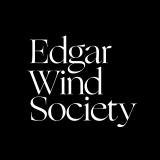
Article: Farniyaz Zaker, “Earthly Paradise”, Oculus: Identity // and place, (The Journal of the Edgar Wind Society For Art History), Michaelmas 2014/Hilary 2015, pp. 37 and 46–47.
Link to Text
 Book: Andy Laffan, The State of Art – Sculpture & 3D #1, Bare Hill Publishing: London, 2013.
Book: Andy Laffan, The State of Art – Sculpture & 3D #1, Bare Hill Publishing: London, 2013.
29 Sculptors and 3D Artists.
A snapshot of current contemporary art practice, 63 artworks from 29 sculptors and 3D artists in this anthology of new and established artists.
Angela Smith, Dario Santacroce, Hollie Mackenzie, Vojsava Fakhro, Philip Hearsey, Jack Sawbridge, Garry Martin, Emma Elliott, Claire Jackson, Louisa Boyd, Louise Emily Thomas, Paul Bonomini, Glenn ‘Fitzy’ Fitzpatrick, Mikhail Gubin, Richard Slee, Farniyaz Zaker, Mary Rouncefield, Min Kyung Kim, Sarah Clarke, Miroslaw Struzik, Jack Davis, Laura Bodo Lajber, Margaret Noble, Alessandro Carboni, Annamaria Kardos, Marcin Loki Klein, Sonya Zero, Carolyn Stubbs and Marisa Ferreira.
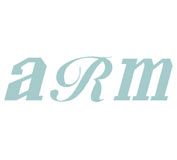 Article: Farniyaz Zaker, “Dealing with an Image: Representation of Iranian Women in Iranian Contemporary Art”, aRm Magazine (Ruskin Magazine), Third Issue, April 2013, pp. 14–15.
Article: Farniyaz Zaker, “Dealing with an Image: Representation of Iranian Women in Iranian Contemporary Art”, aRm Magazine (Ruskin Magazine), Third Issue, April 2013, pp. 14–15.